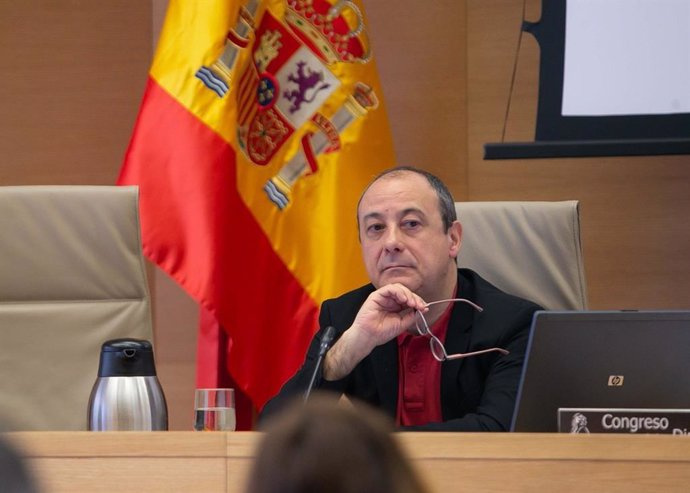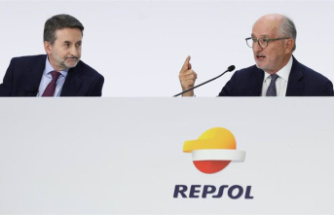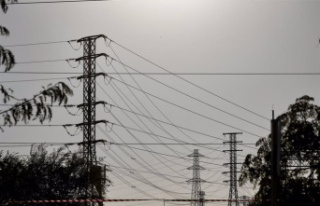Rejects the Social Security proposal on active retirement and asks for a single partial retirement formula for all sectors
MADRID, 21 Abr. (EUROPA PRESS) -
The Secretary of Public Policies and Social Protection of CCOO and negotiator of the union at the social dialogue table on pensions, Carlos Bravo, has expressed his rejection of the partial retirement reform proposal that the Government conveyed to them in the last meeting and has advanced that the union will ask Social Security tomorrow, during a new board meeting, that partial retirement can be accessed up to four years before the ordinary retirement age, two years more than what the Ministry of Elma Saiz proposes.
Bravo, in an interview with Europa Press, has pointed out that the Government's proposal on partial retirement, a modality that makes it possible to make the pension compatible with part-time employment, has not convinced any of the social partners, as it toughens some of its current terms. and those that improve are insufficient.
One of the union's biggest discrepancies with the initial proposal of the Ministry of Social Security is the period of time in which it is allowed to anticipate access to partial retirement with respect to the ordinary retirement age.
The Government proposes maintaining the current period of two years, while CCOO wants to extend it to four years, that is, making it possible to access this type of retirement up to four years before the ordinary retirement age.
"We are proposing that the period for which they can enter is not only two years but is longer. We would like to reach the four years that we had agreed upon in 2011 and that the Popular Party cut," said Bravo, who has also insisted that he will convey to the Government the need for there to be only one partial retirement formula, valid for all sectors.
The reason is that an ordinary partial retirement and an extraordinary partial retirement are proposed, a formula that is currently being applied to the manufacturing industry and to which access is allowed four years in advance. The Government proposes cutting this period to three years.
"(In the extraordinary partial retirement) what has been proposed is that the manufacturing industry and some other group that had four years go to three and also in worse conditions, to the extent that reducing coefficients are applied and the pension is not recalculated. regulatory base at the end of the period," he denounced.
Thus, Bravo believes that what the Government proposes is that the figure of extraordinary partial retirement replace the transitional situation that the manufacturing industry has, "tightening the requirements." "And the one used for the rest, the ordinary one, what is proposed is to improve some requirements, but consolidating the two years, which is the main element of discrepancy that we have had. Therefore, there is no improvement, on the contrary, There is a worsening of the previous situation," he defended.
For Bravo, what should be done is to establish a single partial retirement modality, applicable to all sectors, including public employees, who are not allowed to do so right now, which could be accessed in all cases for up to four years. of advance with respect to the ordinary retirement age.
The union official explained that in 2023, 26,000 people partially retired, of which 28% worked in the manufacturing industry and 72% in other sectors.
"Partial retirement is something that is being demanded in all sectors of activity. The proposal made by the Government is to somewhat improve the regulation for all sectors, but maintaining the two years of advance payment, which we want to extend, and make it worse. substantially for those who had an extraordinary situation, which is the manufacturing industry, which has not been well received by any of the social partners," he stressed.
Furthermore, with respect to the relief contracts that may or may not be carried out in the partial retirement modality, Bravo has indicated that they will ask the Government for improvements in salaries and in the quality of employment of the relief workers, so that they have permanent full-time contracts and occupy non-amortizable positions, that is, those that are not dismissed when the permanent retirement of the partial retiree occurs.
The Government has also put on the table an active retirement reform that would make 100% of the contributory retirement pension compatible with any employed or self-employed work, but the Government's proposal in this matter does not convince CCOO either.
Specifically, Social Security has stated that, to collect 100% of the pension, at least five years of active work would be needed after reaching the ordinary retirement age.
In its proposal on this modality, the Government maintains the need to delay retirement for at least one year in order to be able to combine retirement with the pension and eliminates the incompatibility with the delay supplement, as well as the requirement for a complete contribution career.
In addition, it proposes that the percentage of pension to be received by the retiree who remains active gradually increases: after a year of delay, work may be compatible with 30% of the pension; With two years, 40% of the corresponding pension would be received; with three years, 50%; With four years, 75% would be collected, and with five or more years active, 100% of the pension.
The current regulation of active retirement to make the contributory retirement pension compatible with the performance of any work as an employee or self-employed person does not allow receiving 100% of the pension unless the activity is carried out on a self-employed basis and it is proven to have been hired. at least one employed worker. The reform proposed by the Government eliminates the singularity for hiring an employee.
Bravo has stressed to Europa Press that they agreed on the active retirement formula two years ago so that it could be accessed one year after the ordinary retirement age, collecting 50% of the pension and compatible with any activity.
"Even if it increases 50% (up to 100%), doing it when someone delays 4 or 5 years, that is, when someone is between 69 and 71 years old working, I think it will not have much impact in the terms in which it is formulated (the proposal), because although the situation improves for those who delay access to retirement for many years, it worsens it compared to the current regulation for those who delay it for one or two years," said Bravo.
Thus, he understands that with this Government proposal, active retirement is not made more attractive, a modality that, as he has pointed out, actually has a "very small" presence in the Spanish labor market, since it only affects 70,000 people, the most of them self-employed.
"And they are also self-employed with a debatable profile, because on the one hand you have the self-employed who reaches retirement with a very meager pension and needs to continue working, where it is justified and it makes no sense to tighten the conditions, and on the other hand On the other hand, you have the self-employed person who reaches retirement age with a business that works well, who has no intention of retiring, but plans to maintain his business, and who finds himself with an improvement in that benefit. It is very debatable whether there is. to enhance that when someone maintains that activity without any difficulty," he explained.
"In any case, we do not consider the proposal as a whole sufficient and we will see at the negotiating table what it delivers," said Bravo, who hopes that there can be an agreement at the negotiating table before the summer.













